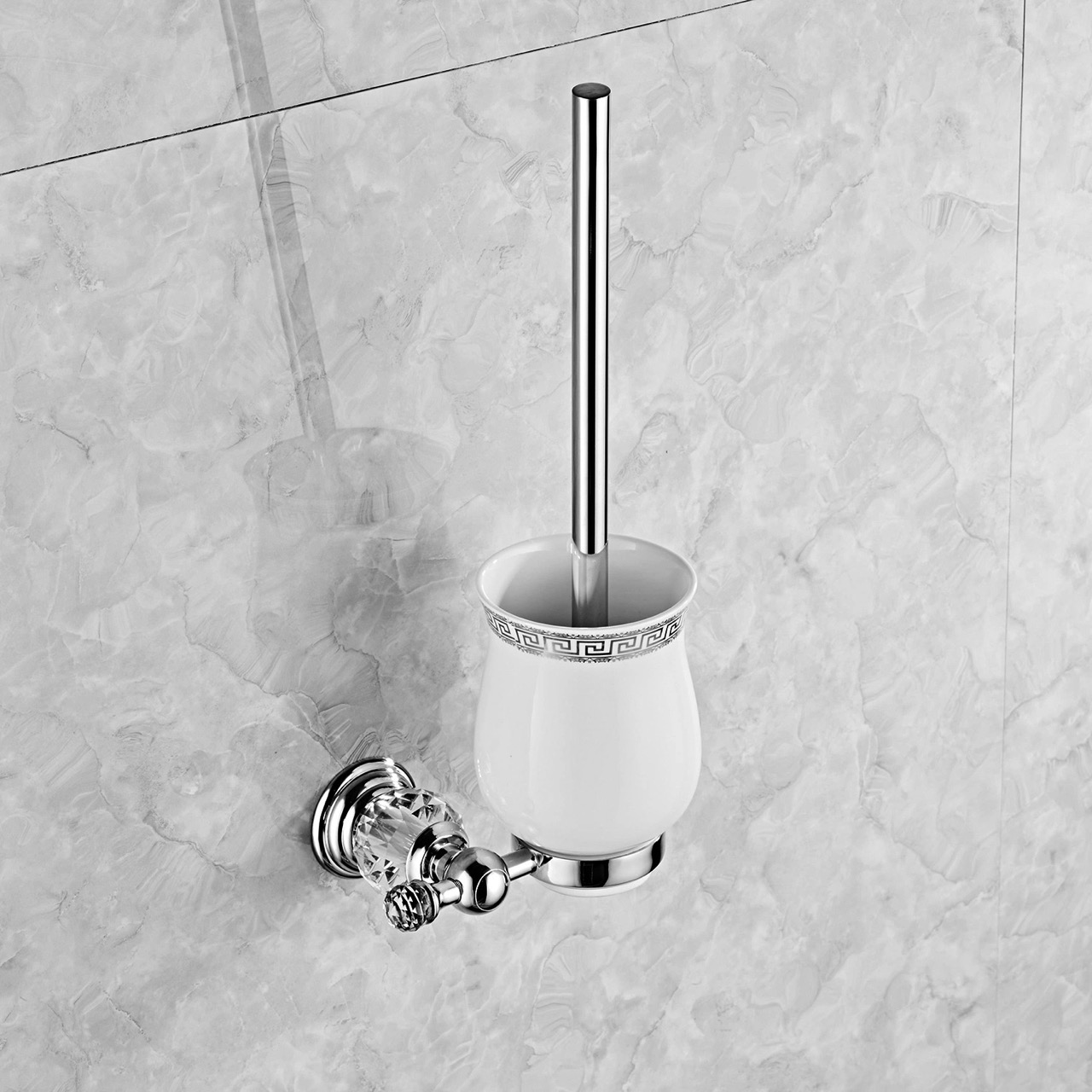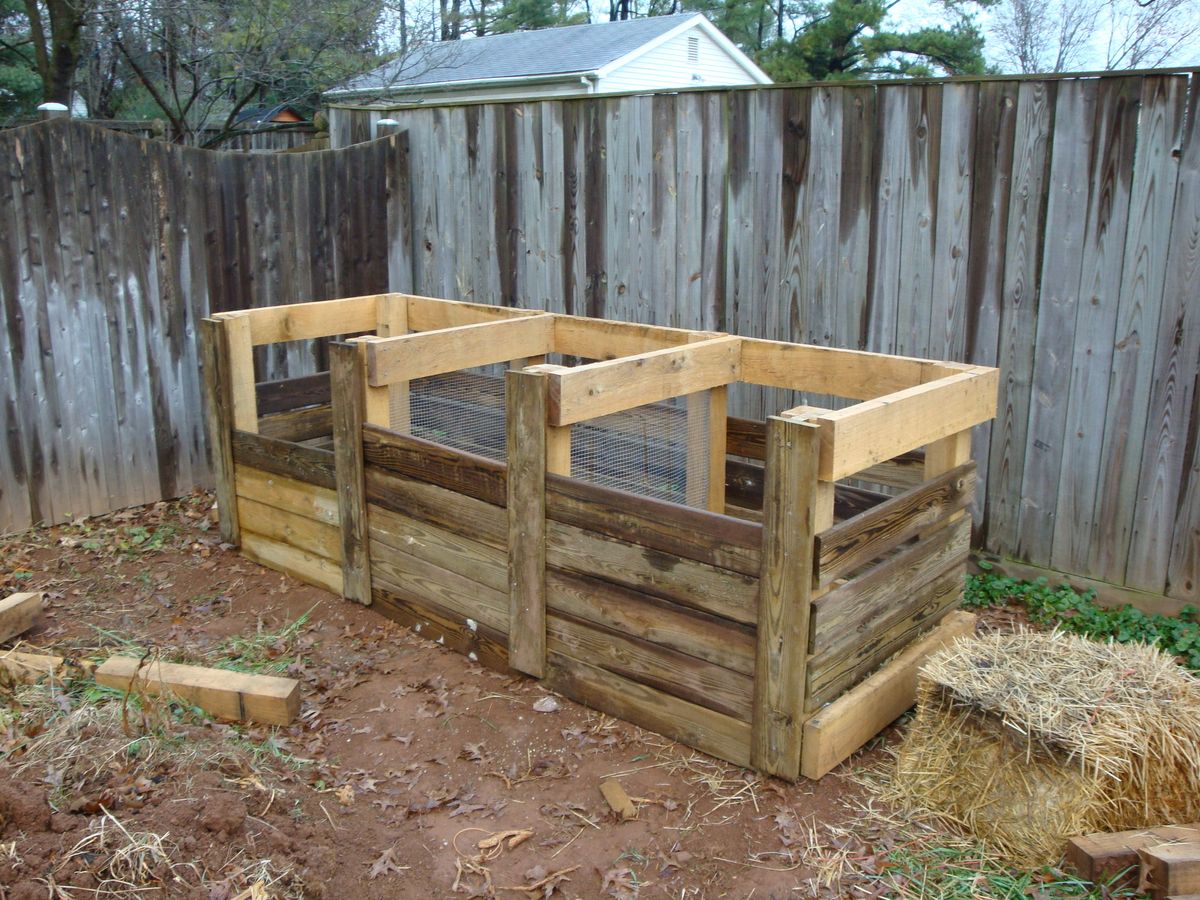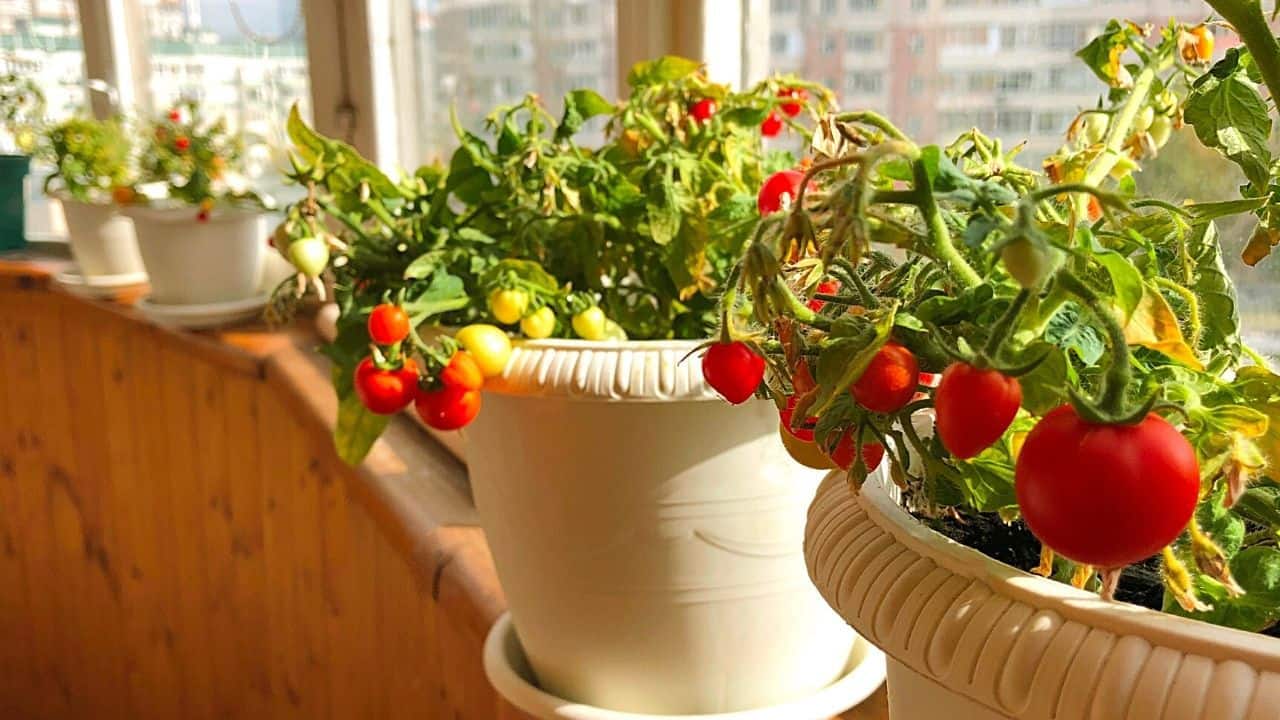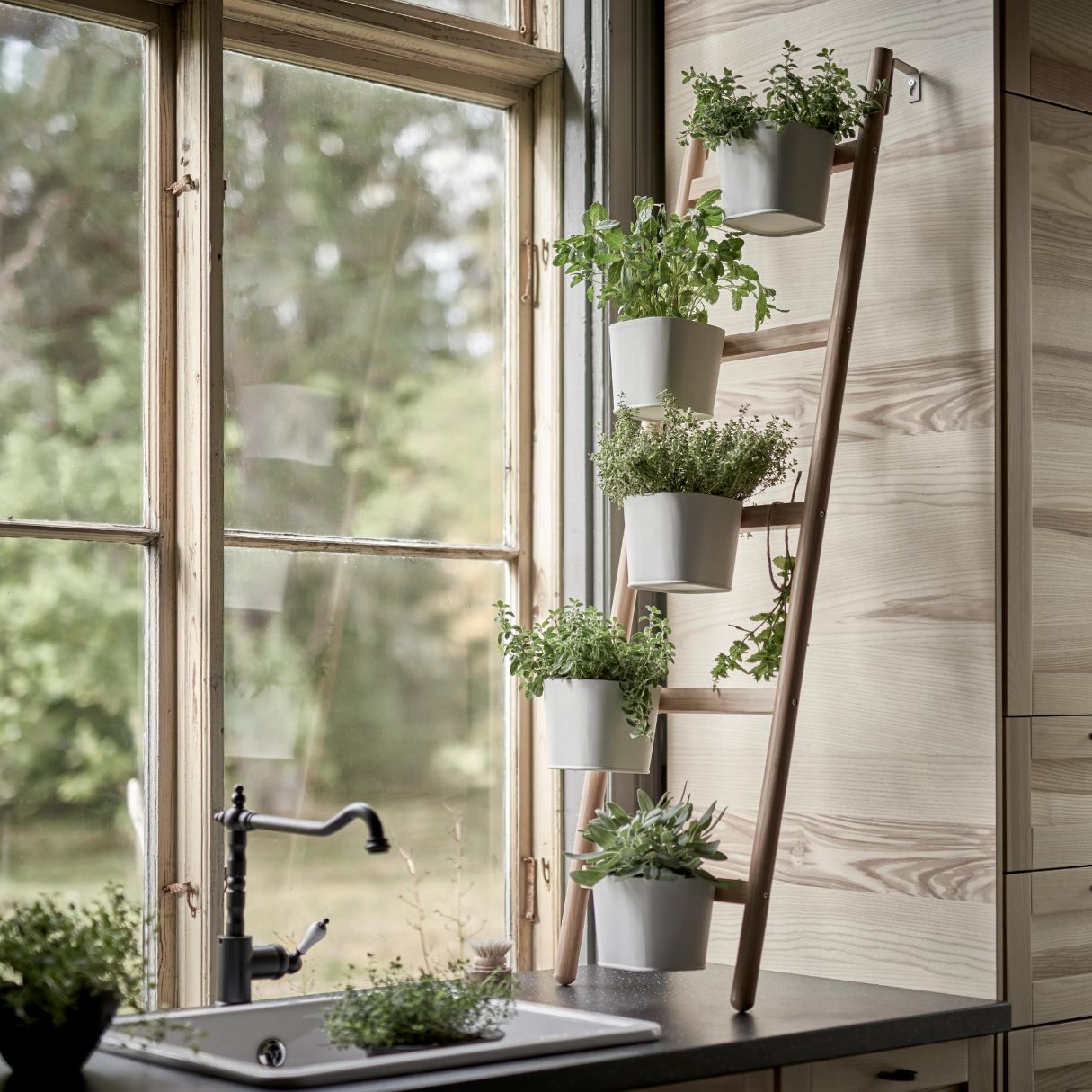

Articles
How To Build A Compost Toilet
Modified: October 19, 2024
Learn how to build a compost toilet with our informative articles. Save money and reduce waste with this sustainable solution.
(Many of the links in this article redirect to a specific reviewed product. Your purchase of these products through affiliate links helps to generate commission for Storables.com, at no extra cost. Learn more)
Introduction
When it comes to sustainable living and reducing our impact on the environment, finding alternative solutions for waste management is crucial. One such solution is building a compost toilet. Compost toilets, also known as dry toilets, are a practical and eco-friendly way to handle human waste without the need for traditional water-based sewage systems.
In addition to being environmentally friendly, compost toilets also offer several benefits. They conserve water by eliminating the need for flushing, which is especially valuable in areas with limited water resources or off-grid living situations. Compost toilets also produce nutrient-rich compost that can be used to fertilize gardens or plants, completing the cycle of sustainability.
If you’re considering building a compost toilet, you’re taking a significant step towards reducing your ecological footprint and embracing a more sustainable lifestyle. In this article, we will guide you through the process of building your very own compost toilet, step by step.
Key Takeaways:
- Embrace sustainability by building a compost toilet, conserving water, reducing environmental impact, and creating nutrient-rich compost for your garden.
- Take a proactive step towards a sustainable future with a compost toilet, contributing to a cleaner environment and embracing a circular approach to waste management.
Read more: How Much Is A Composting Toilet
Step 1: Gather Materials
Before you begin building your compost toilet, it’s important to gather all the necessary materials. Here’s a list of items you’ll need:
- A barrel or container with a tight-fitting lid
- Wood or metal for constructing the toilet seat and structure
- Tools such as a saw, drill, and screws
- Ventilation pipe and fittings
- Screen or mesh for vent and drainage
- Carbon-rich materials such as sawdust, straw, or wood chips
- Biofilter materials like peat moss or coconut coir
- Gloves and a face mask for safety
Ensure that the barrel or container you choose is large enough to accommodate the waste and has a tight-fitting lid to control odors. The wood or metal should be sturdy enough to create the toilet seat and the structure around it.
By having all the materials ready beforehand, you can ensure a smooth and efficient building process.
Step 2: Choose a Location
Choosing the right location for your compost toilet is essential for both practicality and privacy. Here are some factors to consider when selecting a spot:
- Accessibility: Ideally, the location should be easily accessible for both everyday use and maintenance. It should be conveniently located near your living area or outdoor space.
- Privacy: Find a secluded spot where you can use the compost toilet without feeling exposed. Consider nearby trees or shrubs that can provide natural screening.
- Drainage: Ensure that the chosen location has proper drainage to prevent any standing water issues. This will help maintain a dry and odorless composting environment.
- Ventilation: Look for a location where you can easily install a ventilation pipe. Good airflow is crucial for odor control and moisture evaporation.
- Composting Area: If you plan to use the compost produced by the toilet, consider a location near your garden or composting area for easy transfer of the finished compost.
Take your time to evaluate different areas around your property and choose a location that meets all these criteria. Remember to check the local regulations or guidelines for compost toilets in your area as well.
Once you’ve selected the perfect spot, move on to the next step of building your compost toilet.
Step 3: Build the Structure
Now that you have chosen the location for your compost toilet, it’s time to start building the structure. Follow these steps:
- Measure and cut the wood or metal to construct the frame of the toilet structure. The dimensions will depend on the size of your barrel or container. Ensure the structure is sturdy and stable.
- Create a base with proper support for the barrel or container. This will prevent any tipping or instability while in use. Place the barrel on the base and secure it in place.
- Attach the frame to the base, ensuring it’s level and secure. This will form the foundation of your compost toilet structure.
- Add additional support beams or framework for stability and durability, if necessary. Reinforce any weak areas to ensure the structure can withstand regular usage.
- Consider adding a hinged lid or doors to the structure to provide easy access for maintenance and cleaning.
Keep in mind that the structure should be designed to fit the specific needs of your compost toilet. It should be comfortable, functional, and aesthetically pleasing.
Once the structure is built and securely in place, you can move on to the next step, which involves constructing the toilet seat.
Step 4: Construct the Toilet Seat
The toilet seat is an essential component of your compost toilet, providing comfort and functionality for users. Here’s how you can construct the toilet seat:
- Measure and cut a piece of wood to create the seat platform. It should be wide enough for comfortable seating, but not too wide to fit within the structure.
- Create a hole in the center of the seat platform. The hole should be the right size to fit over the barrel or container opening.
- Smooth the edges and surfaces of the seat platform to ensure a comfortable sitting experience.
- Add hinges to attach the seat platform to the toilet structure. This will allow you to lift the seat for access to the compost chamber.
- Consider adding a locking mechanism to keep the seat securely in place when not in use.
Remember to position the toilet seat at a comfortable height, ensuring proper ergonomics. The seat should be durable and able to withstand regular usage.
With the toilet seat constructed and installed, you are now ready to move on to the next step: building the composting chamber.
Read more: How To Use A Composting Toilet
Step 5: Build the Composting Chamber
The composting chamber is where the magic happens in a compost toilet. This is where the waste material will decompose and turn into nutrient-rich compost. Follow these steps to build the composting chamber:
- Create a divider within the barrel or container. This divider will separate the waste from the composting chamber and help with the composting process. It can be a simple wooden or metal partition that extends from the top to the bottom of the container.
- Drill small holes in the divider to allow for liquid drainage. This will prevent any buildup of excess moisture within the composting chamber.
- Line the composting chamber with a layer of carbon-rich material like sawdust or wood chips. This will help absorb moisture and create the ideal environment for decomposition.
- As you use the compost toilet, add a layer of carbon-rich material on top of the waste each time. This will help control odors and facilitate proper decomposition.
- Make sure to keep the composting chamber covered with a tight-fitting lid to prevent pests and insects from entering.
It’s important to note that the composting chamber should be well-ventilated to allow airflow and promote decomposition. This can be achieved by installing a ventilation pipe or adding perforations to the barrel or container.
Once the composting chamber is set up, you are ready to move on to step 6, which involves installing ventilation and odor control mechanisms.
When building a compost toilet, make sure to use a well-ventilated design to promote aerobic decomposition and minimize odors. Also, use a moisture-absorbing material like sawdust to cover waste after each use.
Step 6: Install Ventilation and Odor Control
To ensure proper ventilation and odor control in your compost toilet, follow these steps:
- Install a ventilation pipe on the top of the composting chamber. The pipe should extend above the roofline of the structure to allow for sufficient airflow.
- Add a screen or mesh at the end of the ventilation pipe to prevent insects or debris from entering while allowing air to flow freely.
- You can also install a fan or a wind turbine on the ventilation pipe to further enhance airflow and prevent any lingering odors.
- To control odors, consider adding a biofilter or odor-absorbing material to the composting chamber. This can be peat moss, coconut coir, or any other suitable organic material that can neutralize odors.
- Regularly check and clean the ventilation system to ensure optimal airflow and odor control.
Proper ventilation is crucial for maintaining a healthy composting process and preventing any unpleasant odors. The installation of a ventilation system will help keep the compost toilet odor-free and comfortable to use.
With ventilation and odor control in place, you can move on to step 7, which involves adding carbon-rich materials to the composting chamber.
Step 7: Add Carbon-Rich Material
Adding carbon-rich materials to the composting chamber is an important step in maintaining a healthy and efficient composting process. Carbon-rich materials help balance the nitrogen-rich waste and create the ideal environment for decomposition. Follow these steps:
- Collect carbon-rich materials such as sawdust, wood chips, straw, or dry leaves. These materials will act as a bulking agent and help regulate moisture levels in the composting chamber.
- After each use of the compost toilet, add a layer of carbon-rich material on top of the waste. The amount needed will vary depending on the volume of waste, but aim for a ratio of roughly one part waste to two or three parts carbon-rich material.
- Ensure the carbon-rich material is spread evenly to cover the waste completely. This will help control odors and prevent the waste from compacting and becoming anaerobic.
- Regularly monitor the moisture levels in the composting chamber. If the composting material becomes too dry, add a small amount of water. If it becomes too wet, add more carbon-rich material to absorb the moisture.
The addition of carbon-rich material helps create the right conditions for beneficial microorganisms to break down the waste into compost. This process is essential for turning the waste into nutrient-rich material that can be safely used as fertilizer.
With carbon-rich material regularly added, you can move on to step 8, which involves maintaining and managing the compost toilet.
Step 8: Maintain and Manage the Compost Toilet
Maintaining and managing your compost toilet is crucial for its effective operation and longevity. Here are some steps to help you maintain your compost toilet:
- Regularly empty the liquid container, if your compost toilet has one. This will help prevent any buildup of excess moisture and ensure proper composting conditions.
- Monitor the composting chamber regularly to check the composting progress and adjust as needed. The compost should look dark, crumbly, and earthy. If it appears too wet or has a foul odor, add more carbon-rich material to restore the balance.
- Keep the toilet seat and structure clean to maintain hygiene and prevent any unpleasant odors. Use environmentally-friendly cleaning products or vinegar and water solution for cleaning.
- Periodically inspect the ventilation system to ensure it is working properly. Clear any blockages or obstructions that may hinder airflow.
- Continuously add carbon-rich material after each use to maintain a healthy composting environment. This will aid in decomposition and odor control.
It’s important to follow proper hygiene practices when using and maintaining the compost toilet. Wash hands thoroughly after each use and handle waste materials with gloves to prevent any potential contamination.
By regularly managing and maintaining your compost toilet, you’ll ensure that it operates efficiently and provides you with a sustainable and eco-friendly waste management solution.
With proper maintenance in place, you can now move on to the final step: disposing of the compost produced by your compost toilet.
Read more: How To Build A Compost Bin With Pallets
Step 9: Dispose of Compost
Once the compost in your compost toilet has fully decomposed and transformed into nutrient-rich material, it’s time to dispose of it properly. Follow these steps:
- Use a shovel or scoop to remove the compost from the composting chamber of your toilet. Take care not to disturb the divider that separates the compost from the waste.
- Transfer the compost to a designated composting area or a compost bin in your garden. This compost can be used to enrich the soil and nourish your plants.
- Spread the compost evenly over the desired area, ensuring it is well-mixed with the existing soil. This will help enhance the soil’s fertility and promote healthy plant growth.
- Allow the compost to further mature in the garden or composting area for a few months before using it on sensitive plants or edible crops.
It’s important to note that not all compost from a compost toilet may be suitable for use on edible crops. Due to the nature of human waste, it’s recommended to use the compost on non-edible plants or ornamentals to avoid any potential contamination risks.
Remember to continue maintaining your compost toilet, adding carbon-rich material, and monitoring the composting process to ensure a continuous supply of compost for your gardening needs.
Congratulations! You have successfully built and managed your compost toilet and have now completed the final step of disposing of the compost. By utilizing this eco-friendly waste management solution, you have taken an important step towards sustainability and reducing your impact on the environment.
Conclusion
Building a compost toilet is a wonderful and sustainable way to manage human waste, reduce water consumption, and create nutrient-rich compost for your garden. Throughout this step-by-step guide, we have explored the process of building and maintaining a compost toilet, from gathering materials to disposing of the compost. By following these steps, you can create your own eco-friendly waste management system and contribute to a more sustainable lifestyle.
Compost toilets offer numerous benefits, including water conservation, minimal environmental impact, and the production of rich organic matter to nourish your plants. These toilets are particularly useful in areas with limited access to water or for those who are looking to live off-grid.
Remember to choose a suitable location for your compost toilet, ensuring accessibility, privacy, and proper drainage. Construct a sturdy structure and a comfortable toilet seat that fits your needs. Build a composting chamber with appropriate ventilation and odor control to create optimal conditions for decomposition. Regularly add carbon-rich material, maintain hygiene, and manage the composting process. Finally, dispose of the compost responsibly by using it to enrich your soil and support healthy plant growth.
By embracing the concept of compost toilets, you are taking a proactive step towards a more sustainable future. You are reducing your reliance on traditional water-based sewage systems, conserving water resources, and restoring nutrients back into the earth. Your efforts in creating and maintaining a compost toilet contribute to a cleaner environment and promote a circular approach to waste management.
So, go ahead and enjoy the benefits of a compost toilet. Not only will you make a positive impact on the environment, but you will also experience the satisfaction of living in harmony with nature and embracing a greener lifestyle.
Frequently Asked Questions about How To Build A Compost Toilet
Was this page helpful?
At Storables.com, we guarantee accurate and reliable information. Our content, validated by Expert Board Contributors, is crafted following stringent Editorial Policies. We're committed to providing you with well-researched, expert-backed insights for all your informational needs.














0 thoughts on “How To Build A Compost Toilet”